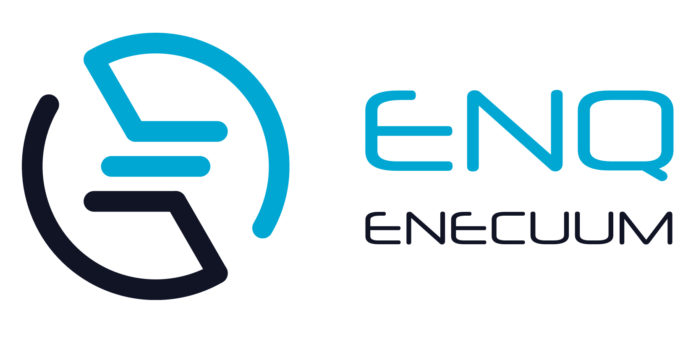
In the year 2018, there are 4 billion active smartphones in the world. By 2020, this number is projected to grow to 6 billion. In 2017, the total computing power of all extant smartphones was 1250 petaflops – 10 times more than the most powerful supercomputer. However, no more than 10% of the capacity is actually utilized by the smartphones at any given time.
Telecommunication companies that begin to implement blockchain technology in their businesses will be able to gain obvious advantages over their competitors. The main use case would be where operators decide to fully utilize the technology and sell PoA mining as a white label service. In this case, their Average Revenue Per User (ARPU) can increase by 100%. The costs for the necessary equipment and corollary tools needed for the transition would be small. In addition, an operator can build its own B2B & B2C solutions, improve purchasing, procurement, and supply chain management, and even optimize charging and billing.
Existing solutions do not provide an opportunity to implement these changes.
If we consider the classical mining scheme, smartphones do not fit the case well. They have too little memory to store the full version of the blockchain. A resource-consuming mining is likely to cause the phone to quickly overheat. Further, the battery can deteriorate, the display can become frozen or the keyboard can fail, either physically from the heat or by freezing due to heavy use of the phone’s CPU uptime. During such mining activity, it cannot be used for its intended purpose. Current applications for mining on a smartphone offer such a low data processing speed that a day’s run is likely yield only few dozen cents. As at this time, mobile mining is more an amusement, than an effective source of income.
How to make mobile mining useful and effective
At Enecuum, we have introduced improvements on existing mining algorithms in a way that facilitates the solution of cryptographic problems that allow the user to receive mining reward.
Our developers have discovered ways to allocate a portion of unutilized smartphone processor capacities for verification and validation of transactions, calculation of smart contracts, and decentralized data storage with a shared secret. And for the user it is as easy as it is for them to use their smartphone.
Most of us use no more than 10-15% of the device’s capacity. Games and social networks do not load it that heavy. Previous blockchain algorithms, Proof-of-Work (PoW) and Proof-of-Stake (PoS), required high computational power, special crypto mining farms, or large crypto wallet balance. In addition, the entire blockchain had to be stored in the device’s memory to make it possible to confirm any transaction on the network.
The new Enecuum blockchain algorithm for Proof-of-Activity (PoA) links PoW and PoS and is a part of the hybrid consensus algorithm. Cryptographic tasks here do not require complex computations, so powerful processors are not needed, and therefore little energy is used. Entries in the blockchain are added only by miners who have gained permission to do so. This algorithm has high throughput and low costs. Moveover, it doesn’t require you to store the entire blockchain on your device – each subsequent action confirms the previous one. This frees a colossal amount of resources.
The confirmation of transactions in Enecuum’s hybrid consensus algorithm goes through 3 stages:
– Solution of the cryptographic problem;
– Confirmation of the correct answer;
– Recording the new transaction into the blockchain.
Users have specific roles in the hybrid consensus, so that each node (user) does not spend all its resources performing all blockchain-related tasks at once. Combination of different algorithms and different node roles makes it possible to use different devices with different capabilities at different stages of transaction confirmation.
The most resource-intensive stage is the stage involving PoW mining. At the first stage, users who decided to become PoW miners solve a complex cryptographic problem and form new macro-elements called “macroblocks.” Basically, they have the task of opening these macroblocks.
The most important and low-cost stage is the stage of PoA mining on smartphones. At this stage, the authenticity of an opened macroblock is confirmed by a team of 64 arbitrary smartphones assembled based the geographical location, degree of participation in the system, and other parameters. Each PoA team is designed to have two members who do not participate in the mining itself: a leader of the team and a verifier that keep history of actions performed by the team.
PoA mining does not require large processing and memory capacities, therefore 70% of the mining should be carried out through smartphones.
The final third stage involves PoS mining. At the final stage, the entire record is rechecked by users who decided to become PoS miners. Mining of this type requires the user to have a high enough balance for a stake, stable and wide connection, enough power and storage for constant rechecking of the blockchain verifying that the wallets that issued transactions have a correspondingly sufficient balance.
It isn’t the computational power of graphic cards, but the number of network participants that matters for Enecuum. The more active mobile devices on the network, the greater its capacity.
Here, one of the main modern blockchain problems is solved – the problem of network scalability. In this design, complete blockchains may be created, which split the network into smaller segments and can allow system scalability without restrictions.
This kind of smartphone mining helps the network run at great speed, and provides more efficient operation. In an era of increased leaks of personal data, the use of blockchain technology provides decentralization and, as a consequence, security for subscribers.
The mining commission is divided among all the participants.
Tokens are distributed once a day on average. This helps protect the system against hacking and against attempts to gain control over the aggregate computational power.
How will the Wallet for mobile mining work?
The wallet app by Enecuum shouldn’t require users to have much technical knowledge.
The minimum hardware requirements per smartphone are designed to be:
– 4 GB of RAM
– Android 5.0 and higher
– 1 GHz CPU
– 5 GB of free storage
One more important requirement will be a good network connection.
Once the user installed the wallet application, they should be able to start mining with no additional complex adjustments. Mobile mining is designed to use little energy and memory and consume no more than a regular instant messenger that runs in the background. Even right now, the energy consumption in the test version of the wallet is 5% in 30 minutes and it can be improved.
The Proof-of-Activity algorithm from Enecuum is designed to make any device suitable for running the wallet a mining node and it only adds to the strength and speed of the system.
One of the tasks is to allow for compensation of the smartphone’s price. Ideally, the user buys a smartphone, installs the wallet, and after 18 months they get the opportunity to purchase a new device.
The Enecuum ecosystem is still in the test mode. The mining mechanism is already being tested and the issuing of tokens will start soon (in the testnet, limited public use). Part of the code is already open on GitHub. You can also check out the statistics on the testnet.
There are several blockchain algorithms on the market. The future belongs to those that will work without dedicated, cumbersome and expensive equipment. Ideally, people should be able to create value (mine) using all the devices that they have: smartphones, tablets, navigators, etc.
Telecom operators will be able to improve their loyalty programs for their subscribers relying on the Enecuum wallet app. As an example, in return for the use of the subscriber’s phone for the mining service, the operator can award the subscriber some tokens, which they can later spend on a new phone or some paid services from the operator.
[newsletter_form lists="1"]










